SeleniumConf Virtual 2020 Recap
Categories:

This year the Selenium Conference was held virtually, and despite that, the conference was again that exciting place where the Selenium community meets every year to share and learn about the most popular browser automation tool in the world. The conference offered talks about improved testing practices, new tools to simplify the setup of automated tests, the future of Selenium, and lots of learnings from speakers who shared their use cases and practical advice for how they use Selenium at work.
Here are some takeaways and interesting talks from this year’s conference:
Selenium: State of the Union
A peek at the upcoming Selenium 4 release was possible thanks to the demo Simon Stewart gave during this traditional talk that happens in every Selenium conference. Selenium 4 is shaping up nicely and will leave the Alpha state soon. We are all looking forward to the betas, and a candidate release shortly after that. The talk also invited other members of the Selenium team to share the organizational work they have been doing in the project, including diversity, governance and welcoming contributors.
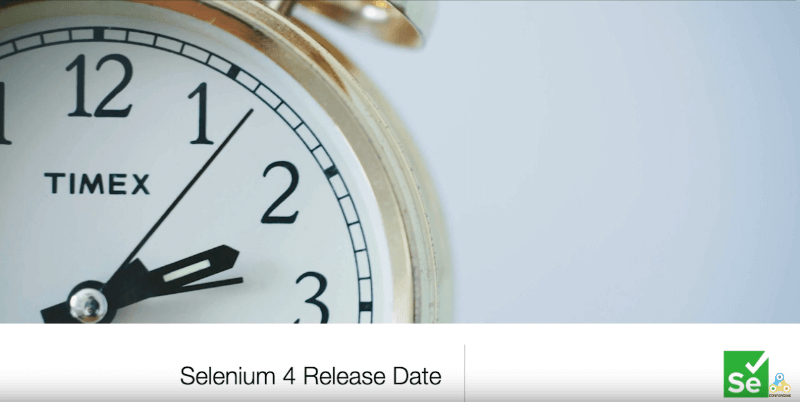
Build a responsive typescript wdio framework
Varuna Srivastava gave a talk together with Wim Selles that showed how to build a robust and scalable framework for UI testing, based on WebdriverIO. It showed concepts that are important when getting started with JavaScript, NodeJS, and the NPM ecosystem. Furthermore, there was a broad overview of WebdriverIO and its shiny features, as well as a demo on how to use TypeScript for testing. This is a recommended talk for anyone who wants to get started on testing with JavaScript.
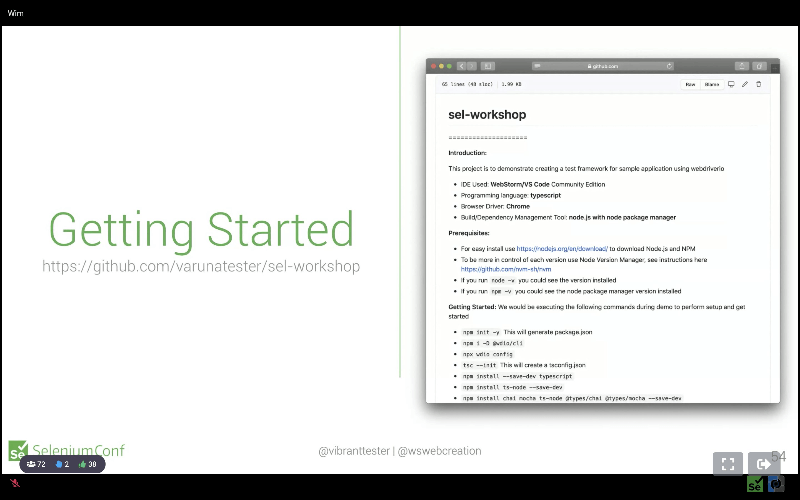
To Test and monitor one website is not that hard, but what if you need to do it to over 40 websites?
This was an interesting talk from Jesus Sanchez, where in order to avoid having the QA department as a bottleneck for the growing team of developers, they took the approach of building tools and resources for developers and enabling them to write tests for their over 40 websites. It is an interesting take on how the QA role becomes a facilitator and an enabler for the rest of the organization, while coaching everyone on how to write automated tests and the value of testing the right thing.
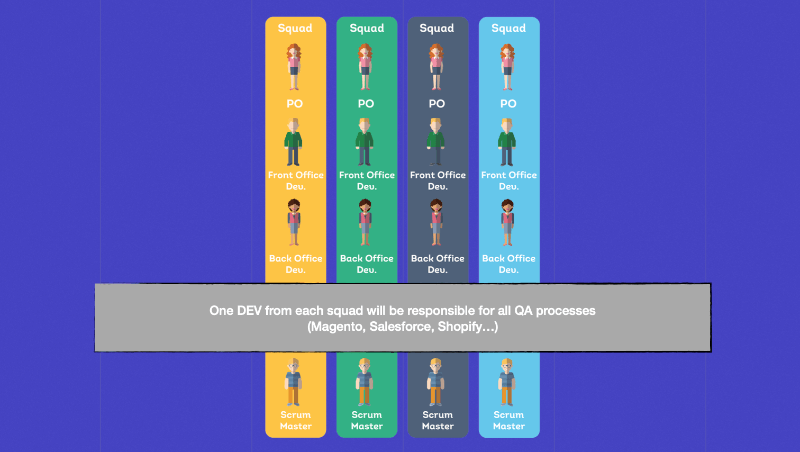
Careers in Testing – Identify your SuperPower
Smita Mishra gave a captivating talk where she invited all testers to think what alternative paths could be present in their careers, given that some organizations value testing more than others. Smita showed that if you understand what you enjoy the most, and find a way to combine that with your current and future skills, it could show you how to grow your career by finding and following a path of the least resistance.

Developing Selenium tests with JUnit 5
JUnit 5 is the new iteration of this popular testing framework, and it implements a new programming and extension model named Jupiter. Boni García presents in this talk a JUnit 5 extension called Selenium-Jupiter, the demos showed illustrate how useful this extension is because it simplifies the test configuration and reduces the boilerplate code that needs to be written in order to have a test running. Have a look at it because it is well maintained and documented, and it will help you by reducing the time needed to set up your tests.
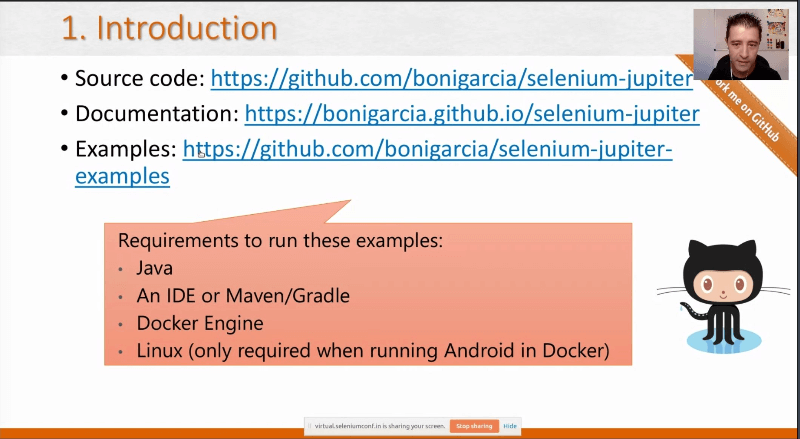
I’m Not Special
One of the keynotes in the conference was done by Jim Evans, where he relates a personal journey through his career and how clearly “not special” he considers himself. One of the key takeaways is the fact that you become a major contributor and you do not need to be special to do that. No review will make enough justice to highlight how heartwarming and encouraging this talk was, it is a must watch for anyone who wants to become a contributor.
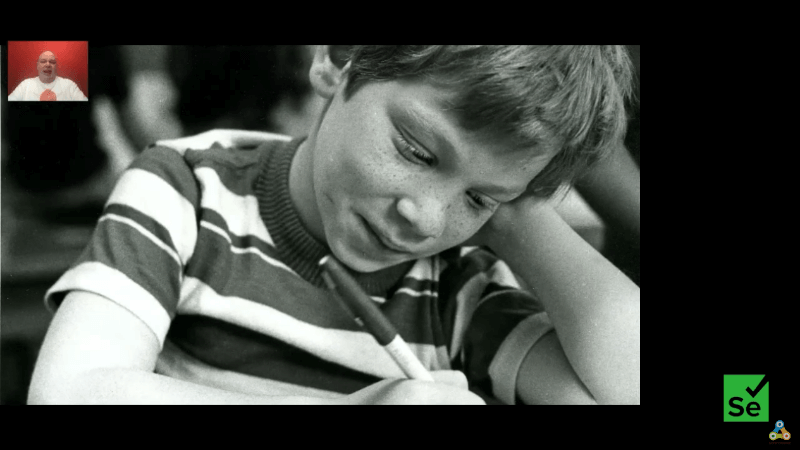
Closing keynote
The final session of the conference was the keynote where the project committers do an open Q&A with the community. Different opinions were shared around the question of the challenges the Selenium project sees by the growing number of browser automation tools. In addition, all project contributors made an open invitation to the community to get involved in the project, if you are interested in that, please check the project’s governance document. This is another recommended session to watch, lots of insights about how the project and its individuals work that will help the community understand the project better.

This was originally posted at https://opensource.saucelabs.com/blog/selenium_conf_2020_recap/







